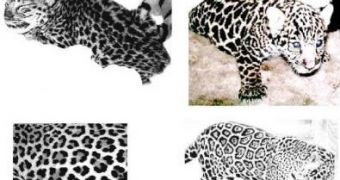Leopard's spots and Zebra's stripes inspired the ancient myths famously retold in Kipling's "Just So Stories." They also led legendary mathematician Alan Turing to suggest that some patterns in nature are due to various chemicals, or morphogens, diffusing across surfaces and forming shapes where they interact.
Few Turing-type models, however, addressed the fact that such patterns may evolve over time. A two-stage variation of Turing's model, recently developed by physicists at Taiwan's National Chung-Hsing University and Oxford's Mathematical Institute, duplicates the changes in the patterns on leopards and jaguars as the animals age.
Both felines sport simple filled spots when they are kittens. By the time they're adults, Jaguar's spots have turned to polygons, while Leopard wears rosettes.
The researchers' model replicates the changes each of the species experiences, provided that the model parameters are tuned in different ways after the initial spots have formed. No one has ever found the morphogens that might be responsible for decorative animal pelts, which potentially makes Turing pattern morphogens the "Just So Story" of modern biology.
Still, the researchers are encouraged by the fact that their model easily accounts for the big cats' complex and changing patterns, and are hopeful that experimentalists will soon track morphogen chemicals down.

 14 DAY TRIAL //
14 DAY TRIAL //